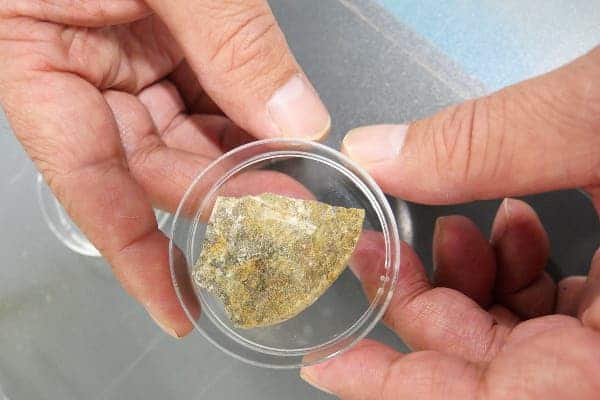Finding microbial life thriving in some of the most extreme environments on Earth is usually a reason for celebration for researchers, as it can guide their search for life on other planets — especially on Mars, their most recent focus of attention.

Newly discovered single-celled creatures living deep beneath the seafloor have given clues about where life on Mars could be found. The bacteria were discovered by the University of Tokyo geomicrobiologist Yohey Suzuki, after a decade examining ancient rocks pulled from the depth of the sea.
Suzuki hypothesized that the cracks in these rocks are home to a community of bacteria as dense as that of the human gut, about 10 billion bacterial cells per cubic centimeter. In contrast, the average density of bacteria living in mud sediment on the seafloor is estimated to be 100 cells per cubic centimeter. The hypothesis turned out to be true.
“I am now almost over-expecting that I can find life on Mars. If not, it must be that life relies on some other process that Mars does not have, like plate tectonics,” Suzuki said in a statement. “I thought it was a dream, seeing such rich microbial life in rocks.”
Undersea volcanoes spew out lava at approximately 1,200 degrees Celsius (2,200 degrees Fahrenheit), which eventually cracks as it cools down and becomes rock. The cracks are narrow and over millions of years, those cracks fill up with clay minerals. Somehow, bacteria find their way into those cracks and multiply.
“These cracks are a very friendly place for life. Clay minerals are like a magic material on Earth; if you can find clay minerals, you can almost always find microbes living in them,” explained Suzuki. “Honestly, it was a very unexpected discovery. I was very lucky because I almost gave up.”
Suzuki and his colleagues discovered the bacteria in rock samples that he helped collect in late 2010 during the Integrated Ocean Drilling Program (IODP), which took researchers to the tropical island of Tahiti in the Pacific Ocean. They used a metal tube to reach the ocean floor and obtain core samples.
Depending on the location, the rock samples were estimated to be 13.5 million, 33.5 million, and 104 million years old. The collection sites were not near any hydrothermal vents or sub-seafloor water channels, so researchers are confident the bacteria arrived in the cracks independently rather than being forced in by a current.
Whole-genome DNA analysis identified the different species of bacteria that lived in the cracks. Samples from different locations had similar, but not identical, species of bacteria. Rocks at different locations have different ages, which may affect what minerals have had time to accumulate therein and therefore what bacteria are most common.
Suzuki and his colleagues speculate that the clay mineral-filled cracks concentrate nutrients that the bacteria use as fuel. This might explain why the density of bacteria in the cracks is eight orders of magnitude greater than the density of bacteria living freely in mud sediment where seawater dilutes the nutrients.
“Minerals are like a fingerprint for what conditions were present when the clay formed. Neutral to slightly alkaline levels, low temperature, moderate salinity, iron-rich environment, basalt rock — all of these conditions are shared between the deep ocean and the surface of Mars,” said Suzuki.
The researchers are now collaborating with NASA’s Johnson Space Center to design a plan to examine rocks collected from the Martian surface by rovers. Ideas include keeping the samples locked in a titanium tube and using a CT (computed tomography) scanner, a type of 3D X-ray, to look for life inside clay mineral-filled cracks.
The study was published in the journal Communications Biology.









